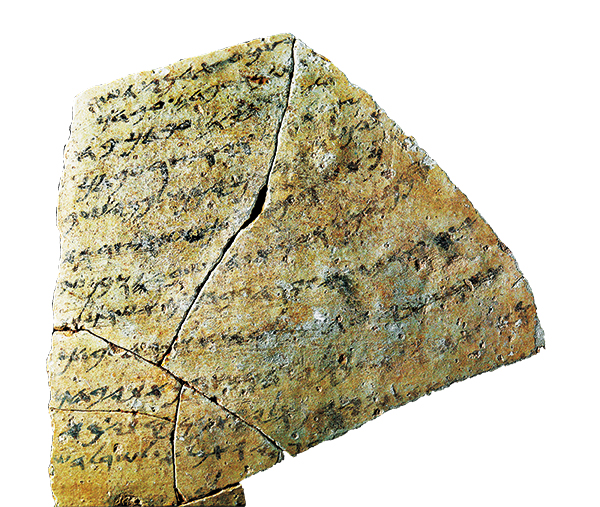Redressing Wrong
Sidebar to: Buy Low, Sell High: The Marketplace at Ashkelon

Directed to a higher official, perhaps the governor of the fort where it was found, a harvest worker pleads for the return of his garment that he claims was unfairly confiscated by his overseer. “Your servant did his reaping,” the appeal asserts in fine Biblical Hebrew.
The harvest worker probably dictated the substance of his plea to an experienced scribe,a who composed it in proper literary and legal style and added the formulaic introduction, which echoes letter-writing throughout the ancient Near East.
The seventh-century B.C.E. inscription was found at the Iron Age fortress of Meṣad Ḥashavyahu, situated on the Mediterranean coast between Tel Aviv and Ashkelon. (See map.)
The inscribed potsherd, or ostracon, was found in six pieces and measures approximately 8 inches high and 6 inches wide. It consists of 15 lines written in ink. The ostracon was first published by Israeli epigrapher Joseph Naveh.
Six other smaller Hebrew inscriptions were also found in the fortress, leading the excavators to determine that it was a Judahite outpost.
Already a library member? Log in here.
Institution user? Log in with your IP address.

